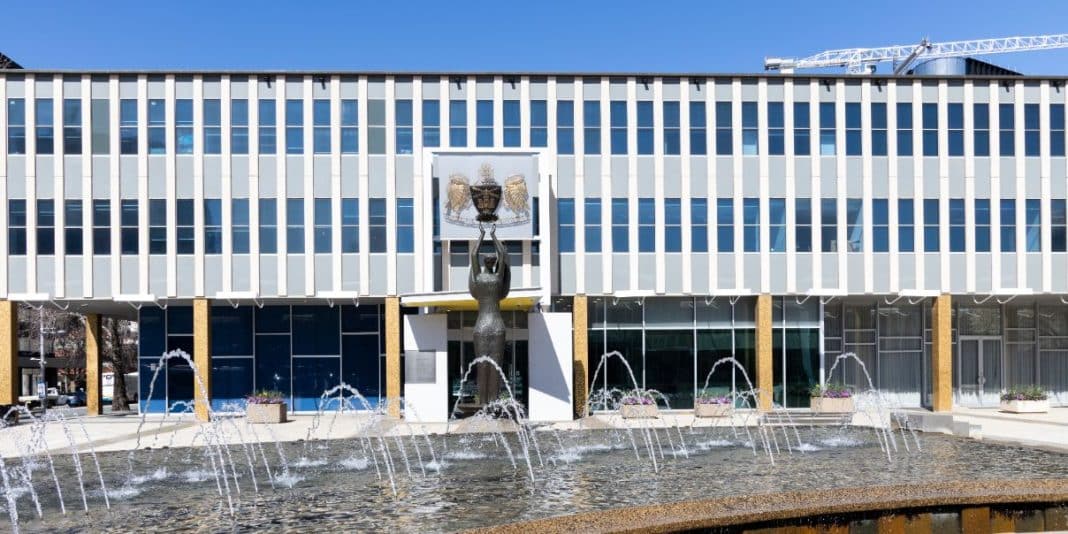The ACT Legislative Assembly expressed its deep sorrow on Tuesday morning following the death of the late Queen, Elizabeth II, and passed on its sympathies to H.M. King Charles III and the entire royal family.
The Assembly extended its condolences to the people of the United Kingdom and the entire Commonwealth during this time, and conveyed the heartfelt condolences of the Assembly and the people of the Australian Capital Territory to H.E. the Governor-General, with a request that this be forwarded to H.M. the King and the royal family.
Chief Minister Andrew Barr said that the Queen’s death marked the end of an era. He paid tribute to her “unwavering dedication to public service” and “strong sense of duty”, constants throughout her 70 years as monarch, in which time much changed.
“Regardless of one’s personal views of the constitutional monarchy, I think most Canberrans – and most Australians – respected Her Majesty’s leadership and how she fulfilled her responsibilities,” Mr Barr said.
The ACT Government made a $20,000 donation to the RSPCA in the Queen’s memory, acknowledging her adoration for animals.
- Australians join world farewell to Queen (20 September)
- The Queen visits Canberra: A timeline (15 September)
- ACT politicians offer condolences on the Queen’s death (9 September)
The Queen made 16 official visits to Australia; Canberra was one of her most visited destinations, Mr Barr noted.
On her first visit, in 1954, she opened a session of Parliament at what is now Old Parliament House, and, according to an apocryphal story, set the precedent for how Manuka is pronounced.
In 1963, she was sprayed with an insect repellent developed at CSIRO to protect World War II troops from mosquitoes. This would later become world famous as Aerogard.
In 1970, she opened the National Carillion, a gift from the British Government to celebrate Canberra’s 50th anniversary; this year, the island was renamed Queen Elizabeth Island to commemorate her Platinum Jubilee.
She visited Canberra several times in the 1970s and 1980s: she opened sessions of Parliament at Old Parliament House in 1974 and 1977. She opened the High Court of Australia in 1980, the National Gallery of Australia in 1982, and Parliament House in 1988. She also opened Bonython Primary School in 1992. She returned to Canberra in 2000, 2002, and 2006, when she met emergency services personnel and volunteers who fought the 2003 Canberra bushfires.
Her last visit to Canberra was in 2011, when she visited Floriade, accompanied by Mr Barr and then-Chief Minister Katy Gallagher.
The King has visited Canberra 10 times, nine of them officially Royal Tours. He saw his first kangaroo here in 1966; walked through Garema Place in 1981; opened Erindale Library in 1983; rode on an ACTION bus to the opening of the Visitors’ Centre at the Australian National Botanic Gardens in 1985; and attended the naming of Queen Elizabeth Terrace in 2012 in the Queen’s Diamond Jubilee year.
In 2015, Mr Barr hosted the King and Queen Consort at a ceremonial tree planting at the National Arboretum. The royal couple each planted a pin oak ‘Freefall’ tree.
“These trees are a legacy of their visit to Canberra, and will represent the close historical connection between our city and the new British monarch for many years to come, whatever the future has in store,” Mr Barr said.
Elizabeth Lee (Canberra Liberals) and Shane Rattenbury (ACT Greens) also spoke.
“The Queen has a special place in the hearts and minds of many Canberrans,” Ms Lee said. “Crowds and mourners at Parliament House and Government House have shown that to be true this past week since the sad news of Her Majesty’s passing. …
“Her Majesty will be remembered for her commitment to country, family, service, and duty. She will be respected and remembered in the history pages for her lifetime of service to the world.”
Ms Lee revealed that when her parents moved from Korea to Australia in the late 1980s, they named her after the Queen.
Mr Rattenbury said there was “an enormous amount to respect and admire” about the Queen’s “courage, diligence, lifetime of public service, and her capacity to grow and change”. But he also believed her death must be a turning point.
“We must in time have the mature and respectful conversations about our future as a country, brought into relief by the Queen’s passing,” he said.
“We do need to talk about becoming a republic. We do need to push back against the growing economic inequality in this country, and the inequality of opportunity that we see symbolised in the enormous wealth of the monarchy. We do need to acknowledge the ongoing destructive legacy of Britain’s global colonisation. We must move forward on reconciliation with Australia’s first people, recognise that sovereignty was never ceded, and develop a path that recognises the true history of this nation.”



